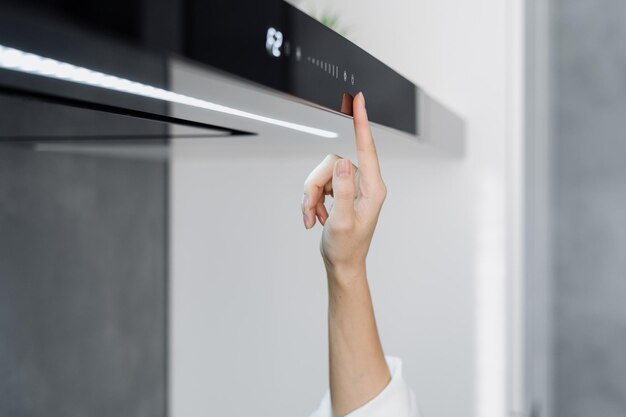Finding the Perfect Fridge Temperature: A Complete Guide
When it comes to keeping your food fresh and safe, your refrigerator plays a crucial role. But have you ever wondered what the optimal temperature setting for a refrigerator is? Not only does the right temperature ensure food safety, but it also helps prolong the shelf life of your groceries. Let’s explore everything you need to know about refrigerator temperatures and how you can set yours for optimal performance.
🌡️ Why Refrigerator Temperature Matters
The importance of setting the correct refrigerator temperature cannot be overstated. Temperatures that are too warm can lead to food spoilage, increasing the risk of foodborne illnesses. On the other hand, temperatures that are too cold may lead to frozen or damaged foods. Striking the right balance ensures that your food remains safe to eat while maintaining its taste and texture.
The Magic Number: What is Optimal?
The general consensus is that the ideal refrigerator temperature is between 35°F and 38°F (1.7°C to 3.3°C). This range ensures that your food is kept at a safe temperature, inhibiting the growth of harmful bacteria but avoiding freezing.
🧊 Understanding Temperature Control
Factors Affecting Your Fridge’s Temperature
While setting your refrigerator to the correct temperature is crucial, several factors can affect how well your fridge maintains this temperature:
- Frequent Door Opening: Each time you open the refrigerator door, warm air enters, potentially raising the interior temperature.
- Overloaded Shelves: Packing your fridge too full can restrict air circulation, making it difficult to maintain a consistent temperature.
- Location and Environment: The room temperature and your refrigerator's location (near a heat source or in direct sunlight) can influence internal temperatures.
How to Check Your Refrigerator’s Temperature
To ensure your refrigerator is set to the right temperature, you can use a stand-alone appliance thermometer, available in most home goods stores. Place it in your fridge for accurate readings, ideally in the center, and check it periodically to ensure consistency.
🚪 Balancing Sections: Top Shelf to Crisper Drawers
Understanding and organizing your refrigerator sections correctly not only optimizes temperature control but also keeps your food fresh longer.
Top Shelves
These are the warmest parts of the fridge as warm air rises, making them ideal for foods that do not require intense cold, like leftovers or beverages.
Middle and Bottom Shelves
Typically, the bottom shelves are the coldest, making them great for storing perishable items like dairy, meats, and eggs.
Crisper Drawers
These are designed to retain moisture, ideal for storing fruits and vegetables. Some modern refrigerators have separate settings for these drawers to maintain optimal humidity.
⚖️ Storing Food Safely
Tips for Refrigerator Storage
Here are some quick tips to ensure your refrigerator is organized for efficiency and safety:
- Don’t Overcrowd: Ensure adequate air circulation by not overloading the shelves.
- Use Containers: Store food in sealed containers to prevent cross-contamination and keep odors from spreading.
- Mind Expiration Dates: Keep an eye on food expiration dates to maintain freshness.
Foods You Shouldn’t Refrigerate
Contrary to common assumptions, some foods are better kept out of the fridge. They include:
- Tomatoes: Refrigeration can alter their flavor and texture.
- Bread: The cold environment can make bread dry and hard.
- Onions and Potatoes: These prefer a cool, dry, and dark place outside the refrigerator.
🛠️ Troubleshooting Refrigerator Temperature Issues
Even with the best care, you might encounter issues. Here are some common problems and solutions for maintaining the ideal temperature.
Common Problems
- Uneven Cooling: This might result from blocked vents or issues with the fridge fan.
- Too Warm: Potential causes include a faulty thermostat or door seal issues.
- Freezing Food: This could be due to setting the temperature too low or problems with the fridge's defrost timer.
Simple Solutions
- Regular Maintenance: Cleaning coils and checking door seals can prevent many issues.
- Proper Placement: Ensure your fridge is placed away from heat sources and has adequate ventilation.
🔍 Quick Tips for Maintaining Optimal Fridge Temperature
Here’s a handy list of tips to ensure your refrigerator maintains the appropriate temperature:
- 🕒 Monitor Temperature: Check your fridge's temperature frequently and adjust as needed.
- 🚪 Keep Doors Closed: Minimize how often and how long you keep the door open.
- 🗓️ Routine Check-Ups: Schedule regular maintenance to catch potential problems early.
- 👨🔧 Professional Help: When in doubt, contact a professional to assist with persistent issues.
📝 Summary Table: Quick Reference Guide
| Aspect | Tips |
|---|---|
| Optimal Temp | 35°F - 38°F (1.7°C - 3.3°C) |
| Avoid Overloading | Ensure air circulation for consistent cooling |
| Positioning | Place perishables on the bottom shelves; use crisper drawers wisely |
| Regular Monitoring | Use a thermometer to check the temperature regularly |
| Maintenance | Keep coils clean and inspect door seals |
Achieving and maintaining the correct temperature in your refrigerator is vital for food safety and quality. By understanding your fridge's settings and how different factors can affect cooling, you can keep your groceries in the best condition possible. Don't forget that prevention—like regular checks and maintenance—helps avoid problems and keeps everything running smoothly. Remember these best practices, and your fridge will keep your food fresh and safe for consumption.
